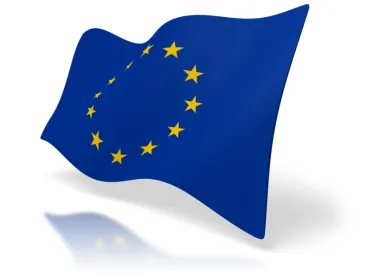According to press reports, the European Securities and Markets Authority (ESMA) plans to send back incomplete EMIR transaction reports to counterparties amidst widespread difficulties with the reconciliation of reports.
EU Regulation 648/2012 on OTC derivatives, central counterparties and trade repositories - also known as the European Market Infrastructure Regulation (EMIR) - entered into force on 16 August 2012. Many aspects of the legislation are similar in scope and provisions to Title VII of the Dodd-Frank Wall Street Reform and Consumer Protection Act of 2010 (Dodd-Frank), but there are some important differences.
Article 9 EMIR requires that all counterparties to derivatives transactions established in the European Economic Area (EEA) report the conclusion, modification, and termination of all derivatives’ contracts to an authorised trade repository (TR).1 The requirement in EMIR for both counterparties to submit reports is different from Dodd-Frank, which allows a single party to a transaction (typically the dealer) to submit required reports. This sweeping provision took effect as of 12 February this year.
TRs must match the reports filed by counterparties to the same transaction. However, the Article 9 EMIR requirement does not specify to which authorised TR a counterparty must report a transaction. In addition, most authorised TRs have full-scope authorisations and receive transaction reports across asset classes.
Almost six months have passed since the reporting requirement came into force and report matching is, not surprisingly, proving very challenging. For instance, the U.S.-based Depository Trust & Clearing Corporation (DTCC)—which has three quarters of the market share in Europe based on transaction volumes—recently admitted that it can only match 30% of over-the-counter (OTC) derivatives transactions and 3% of exchange-traded derivatives (ETD) transactions that have been sent by market participants to different repositories. In response, it is reported that ESMA will direct TRs to send back incomplete transaction reports to counterparties for correction. This may have significant cost and operational implications for counterparties.
I. Scope of the Reporting Obligation
Unlike the EMIR clearing obligation—which applies only to OTC derivative contracts—the EMIR reporting obligation applies to all derivative contracts (OTC and ETD.)
The reporting obligation applies to all counterparties established in the EEA, including (i) financial counterparties (FCs), and (ii) both categories of non-financial counterparties (NFCs):
-
NFCs with non-hedge positions in OTC derivative contracts exceeding for a 30 day period any of the specified notional thresholds set out in EMIR (NFC+s); and
-
NFCs which do not exceed those threshold (NFC-s).
Counterparties have to file the reports wherever they enter into derivatives transactions—in the EEA or elsewhere. Where a derivatives’ contract is entered into between an EEA entity and a non-EEA entity, the EEA entity has the obligation to report it and must state in the report that the other party is not established in the EEA.
While the reporting obligation may be delegated to a third party, counterparties remain liable for the timely and accurate reporting by the third party. They must also sign a special delegation agreement with that third party.
II. Content of Reports
The EMIR implementing measures2 specify the minimum information regarding a transaction that must be reported to a TR, dividing this into (1) specific counterparty data, and (2) common data.
Counterparty data must include a legal entity identifier (LEI) as well as information on the trading capacity of the counterparty, its clearing member, and the marked-to-market valuation of the position. Common data must include a product identifier, a transaction identifier and confirmation timestamp. Overall, the counterparty data includes 26 fields and the common data includes 59 fields. While many of these data fields are self-explanatory, some rely on new standards and systems. These include the LEI i.e., a unique 20 digit alphanumerical code that may be used for eight of the 26 counterparty data fields, and the unique trade identifier (UTIs), which is generated based on the LEI. TRs need the LEIs and UTIs in order to reconcile reports filed by different parties to the same trade.
III. Timing of Reports
New derivatives transactions must be reported to a TR within one working day of execution. For ETD trades, where clearing takes place on the same day as execution, reports should be submitted to a TR up to one working day after the execution. Where clearing takes place after the day of execution and after reporting is made, this should be reported as an amendment to the original report up to one day after the clearing took place.
FCs and NFC+s will be additionally required to report information on exposures, such as mark-to-market or mark-to-model valuations, on a daily basis as of 11 August 2014.
IV. Wide-Spread Reporting Problems
Transaction reporting has started with difficulty. Counterparties and the media have both reported considerable delays and gaps with initial reports due to a number of factors. The first factor is the scope and complexity of the EU regime. In particular, as noted above, under EMIR, both parties to a transaction have to report transaction data, while under Dodd-Frank only one counterparty bears this burden. In addition, as mentioned above, the EMIR reporting obligation applies to both ETD and OTC derivatives, while Dodd-Frank only captures the latter.
Second, ESMA and the national regulators have provided unclear and untimely guidance on how to comply with the reporting obligation. For example, the regulators did not give the industry official guidance as to which counterparty should generate the UTI, how the UTIs should be generated from the LEIs, and how many UTIs should be generated for each trade. As a result, many counterparties have used non-standard placeholders for their UTIs. Another problem relates to ETDs, where the client, broker, clearing member, and CCP may all be considered as counterparties; in addition, a counterparty may only be able to identify its immediate counterparty. As a result, there has been a wide-spread confusion as to which counterparties must report the trade and who the reporting counterparties should identify as the “other” counterparty in their reports. ESMA published its advice very late in the day and specified that the client, broker, clearing member, and CCP must all submit reports, even if none of them have all the relevant information.
Many counterparties, in particular smaller NFCs, were not prepared to comply with the reporting obligation. For example, many of them did not obtain LEIs on time. Due to missing LEIs (and, in turn UTIs), TRs experienced great difficulties trying to reconcile the trades that the counterparties to one transaction reported to two different TRs. For instance, DTCC recently admitted that due to the absence of UTIs, they can only match 30% of OTC derivatives transactions and 3% of ETD transactions that have been sent by market participants to different repositories. Most of the other TRs admitted similar problems with matching trades.
Mindful of these difficulties, ESMA has suggested that - in future - TRs should send back incomplete reports to counterparties, asking for their rectification, instead of trying to reconcile them. (The rectified reports will need to be resubmitted within the reporting deadline i.e., by the end of the day following confirmation of the trade.) This is likely to have significant cost and operational implications for counterparties. It is as yet unclear whether or how ESMA and national regulators will address the issue of past incomplete or delayed reports.
V. Action for Market Participants
Going forward, in order to avoid additional costs and burdens, counterparties which need to comply with the reporting obligation should adapt their systems and procedures as a matter of urgency. In particular, if they have not yet done so, counterparties must ensure that they have obtained a LEI, and know their counterparty classification. They should also ensure that they are making the necessary preparations to be ready to comply with the obligation to report exposures from 11 August 2014.
Further, counterparties should urgently review their systems and procedures to ensure that transactions can be reported, and that specific people are in charge of collating and transmitting reports to TRs within the legal time limits. They should also decide whether they will report the transactions themselves or delegate the obligation—if they opt for the latter, they must have the relevant contractual provisions in place.
The trades may require agreed changes before they can be reported to TRs (in relation to data privacy and confidentiality); the protocols provided by ISDA and FOA may be used to simplify this process.
Finally, counterparties must register and connect with one of the six TRs which have been approved by ESMA. Subsequently, they must also arrange to backload historical data to the TR.
1 The currently authorised TRs include: DTCC Derivatives Repository Ltd. (DDRL); Krajowy Depozyt Papierów Wartosciowych S.A. (KDPW); Regis-TR S.A.; UnaVista Limited; CME Trade Repository Ltd. (CME TR); and ICE Trade Vault Europe Ltd. (ICE TVEL).
2 Commission Delegated Regulation (EU) No 148/2013 of 19 December 2012 supplementing Regulation (EU) No 648/2012 of the European Parliament and of the Council on OTC derivatives, central counterparties and trade repositories with regard to regulatory technical standards on the minimum details of the data to be reported to trade repositories, OJ L 52, 23.2.2013, p. 1–10.






 />i
/>i
